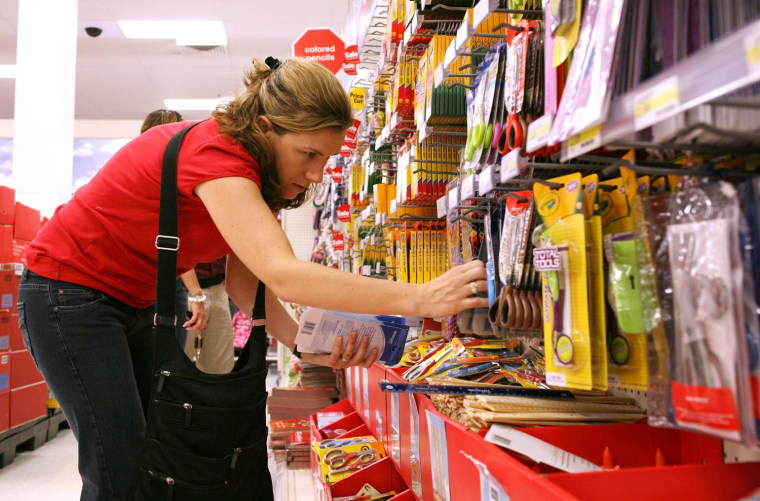The second-biggest shopping event of the year is shaping up to be not much of an event at all.
As consumers increasingly stock up on back-to-school essentials throughout the year, and simultaneously shift their view as to what constitutes a school item in the first place, a new study has found that parents of children from kindergarten through high school plan to spend $434 on back-to-school items this year — a 20 percent decline.
That includes 39 percent who said they will reuse last year's items instead of buying new, up from 26 percent five years ago.
These gloomy results echo those released by the National Retail Federation earlier this month, which found that parents with K-12 children would collectively spend $24.9 billion this year. That represents a 6 percent drop.
While the economy and a still-reluctant consumer base are playing a role in these expected declines, Alison Paul, vice chairman and U.S. retail and distribution leader at Deloitte, said there's more to the story.
As it becomes easier to make back-to-school buys throughout the year — thanks in part to the Internet — shoppers are spacing out their purchases, and in many cases waiting until the start of the school year.
Caution lights flashing for back-to-school sales
"I don't think this is bad news for the economy," Paul said. "I think it's more about (consumer) behavior."
According to Deloitte, which surveyed more than 1,000 consumers, 38 percent said the back-to-school shopping season is less important to their family this year because they replenish supplies year-round.
For those who do participate in the traditional back-to-school season, they're doing it later. Only 14 percent of respondents said they would complete their shopping one or two months before the school year, compared to 19 percent last year. Separately, 31 percent said they would finish after the year begins, up 5 percent from 2014.

These results correlate with earlier findings from America's Research Group, which said 58 percent of parents would buy the essentials during the traditional back-to-school season, and finish up once the winter holiday promotions kick in. That represents an 8-point increase from the prior year.
Retail sales forecasts: Something doesn't add up
Paul also hypothesized that some shoppers no longer consider certain items — like tablets or PCs — school-based purchases. Instead, they view them as household goods. And they may not know what they are truly spending.
That could help explain the discrepancy between last year's Deloitte forecast and the actual results. Although parents said they would spend nearly 20 percent less than in 2013, data from Customer Growth Partners showed back-to-school spending actually rose 4.2 percent.
"Consumers are sending a message to retailers that says the back-to-school shopping season just isn't that important anymore," Paul said.
Deloitte's findings come just weeks after the National Retail Federation issued a forecast that total spending for school-age and college-bound students is expected to come in at $68 billion this year, a 9 percent decline compared to its 2014 prediction.
While some of the hit can be attributed to shifting consumer behavior, Customer Growth Partners President Craig Johnson said earlier this month that there are also broader economic issues weighing on spending. One issue is that fewer than 50 percent of working-age adults have full-time jobs.
Tax-free shopping ahead for these states
Moody's senior analyst Charles O'Shea told CNBC that low-income consumers, in particular, are still struggling. He attributed their "choppy" spending behavior to the fact that many are still feeling the pain from 2013's payroll tax increase and the reduction in food stamp benefits that same year.
Such a bifurcation is evidenced in Deloitte's results. When breaking out responses by household income, 45 percent with less than $100,000 said they would reuse last year's school items instead of buying new. By comparison, only 31 percent of households with $100,000 or more said the same thing.
"We're still seeing a strained consumer at the low end," O'Shea said.